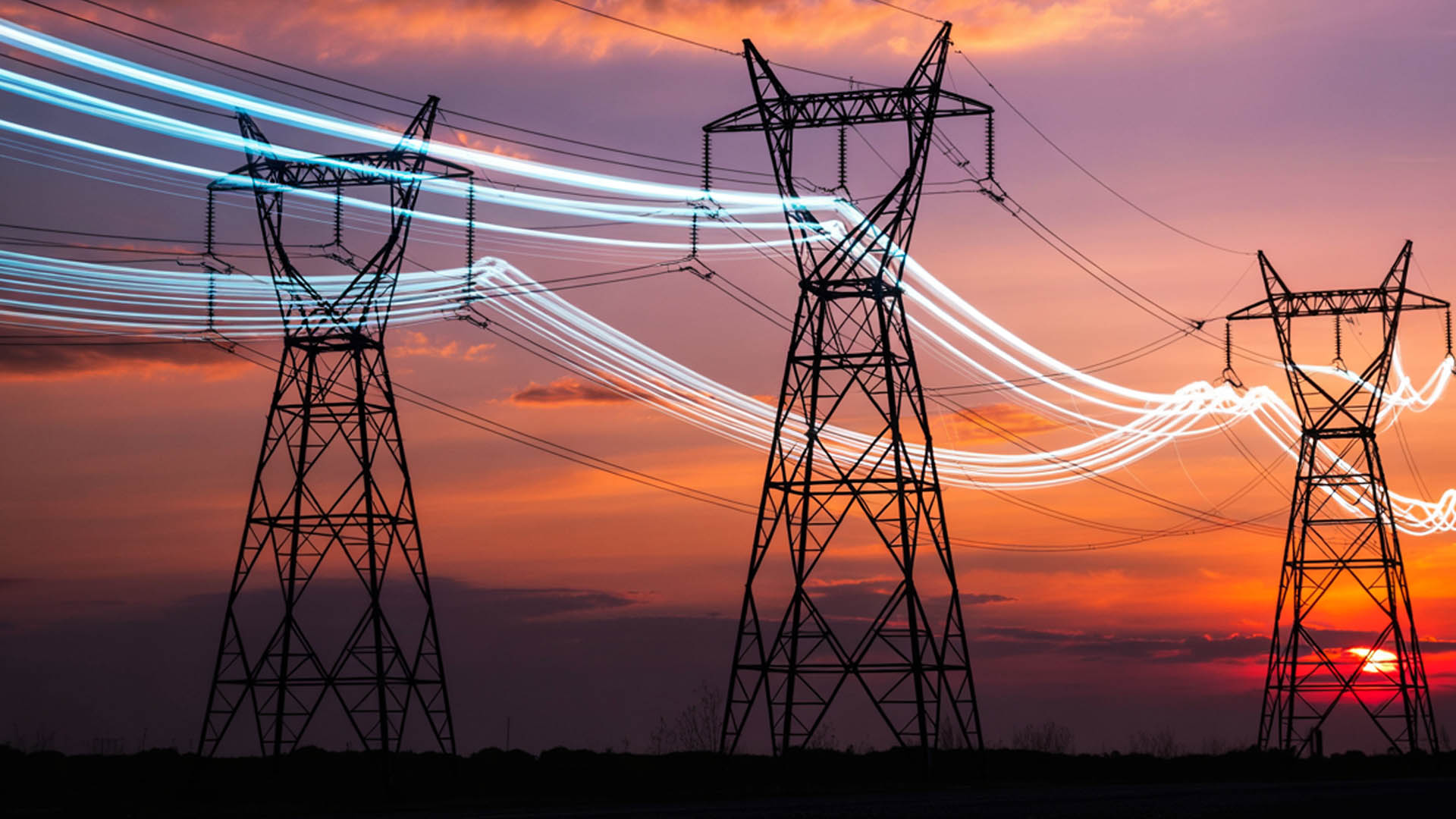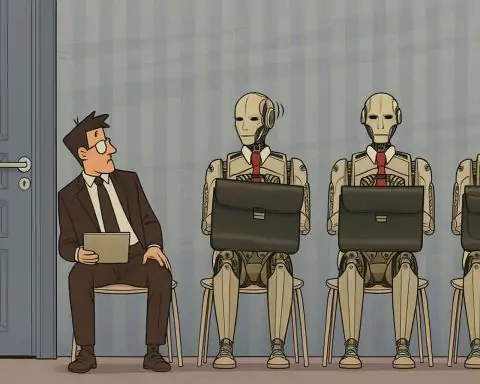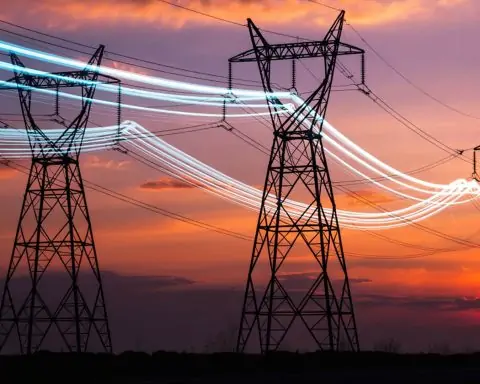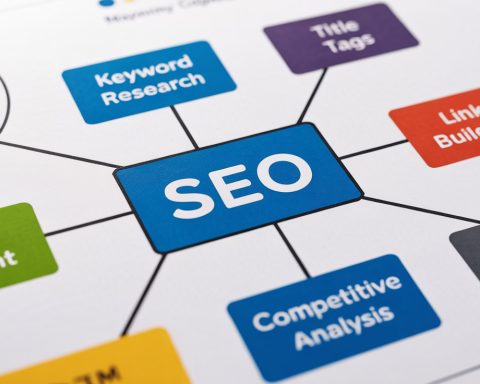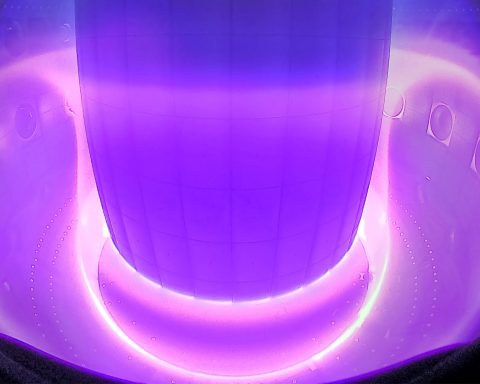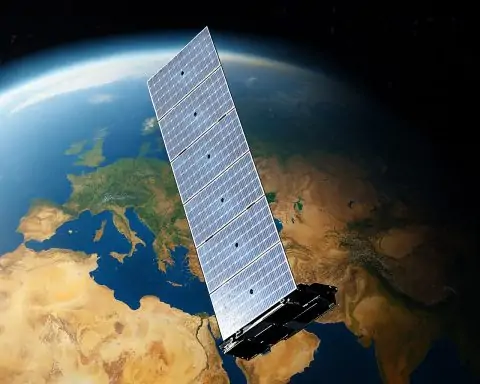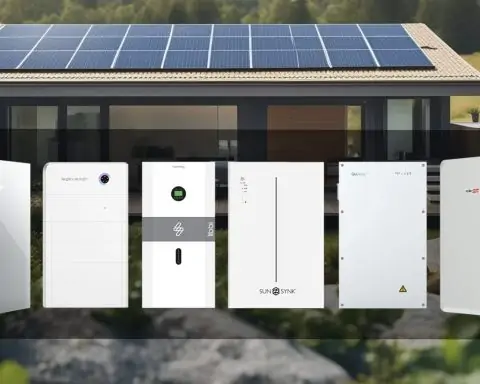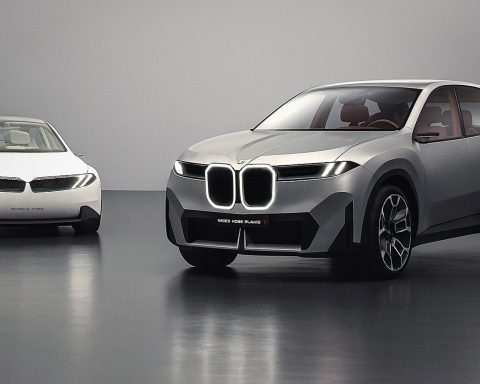- Clean Tech Crunch: A growing number of clean energy companies – from solar installers to wind farm developers and EV startups – are teetering on the brink, with several high-profile bankruptcies in 2025.
- Bubble Boom to Bust: A renewable energy “bubble” that swelled in recent years is now deflating fast. A leading clean energy stock index has crashed ~85% from its peak, and once-frothy valuations of battery and EV firms have imploded reuters.com.
- Rising Headwinds: Clean energy firms face brutal headwinds: surging interest rates (raising financing costs), supply chain disruptions, and intense competition (especially from cheaper Chinese manufacturers) are squeezing margins.
- Policy Whiplash: Policy uncertainty – especially under President Donald Trump’s fossil-fuel-friendly agenda – is undermining investor confidence. Trump-era moves like halting offshore wind projects and freezing renewables spending have rattled the industry reuters.com, utilitydive.com.
- Bankruptcies Mount: Major players across sectors have hit the wall. U.S. solar installer Sunnova filed Chapter 11 bankruptcy in June 2025 pv-tech.org, Danish wind giant Ørsted’s stock has plunged ~87% since 2021 reuters.com, and EV truck maker Nikola went bust after its share price collapsed by over 90% reuters.com.
- Experts Sound Alarm: Energy CEOs, analysts and financiers warn that many clean tech ventures overestimated growth and are now struggling to survive. Some liken the downturn to a repeat of the 2000s “Cleantech 1.0” bust reuters.com, though long-term demand for clean power still trends upward.
- Investment Slowdown: Venture capital and funding for climate tech have pulled back sharply – down nearly 50% in 2025 news.crunchbase.com – even as global renewable investment hits record highs driven by China and Europe. Investors are now asking: is the green bubble truly popping, or just pausing?
A Clean Energy Boom Runs Out of Steam
Wind turbines and solar panels in Palm Springs, California – symbols of a renewable energy boom that is now facing a harsh reckoning as market realities set in.
Not long ago, clean energy was riding high on a wave of exuberant investment and optimistic growth projections. Generous tax credits and climate policies under former President Joe Biden – most notably the 2022 Inflation Reduction Act (IRA) – fueled a surge of wind, solar and battery projects in the early 2020s eenews.net. Venture capital flooded into green tech startups, and stock indices for renewable energy soared. The WilderHill Clean Energy Index more than quintupled from March 2020 to early 2021, reflecting euphoria that “going green” was the next big thing reuters.com. By late 2020, lofty valuations abounded – for example, battery maker QuantumScape briefly exceeded the market cap of General Motors despite having no revenue reuters.com.
However, fast-forward to 2025 and the picture has dramatically reversed. Clean energy companies globally are now struggling with a potent mix of economic and political challenges. Higher interest rates have made debt and project financing more expensive, stalling projects and squeezing companies that grew reliant on cheap capital eenews.net. Supply chain bottlenecks and inflation have driven up costs for everything from solar panels to wind turbine steel, undercutting profitability. Many projects failed to meet the rosy growth rates anticipated during the boom times, leading to disappointing returns eenews.net. As one industry observer quipped, the green technology frenzy of the early 2020s has “imploded” in remarkably similar fashion to the cleantech bubble of the late 2000s, which also burst when exuberant forecasts met reality reuters.com.
Crucially, an abrupt shift in U.S. policy direction has added political headwinds to these market pressures. The return of President Donald Trump – known for championing fossil fuels and dismissing climate concerns – has brought deregulation and even direct intervention that spooked renewable investors reuters.com. “A green energy bubble might soon pop, as clean energy companies struggle to stay afloat under President Donald Trump,” warned Climatewire in an October 2025 analysis eenews.net. In short, the once high-flying clean energy sector finds itself in a fight for survival, as we detail across solar, wind, and electric vehicle industries below.
Solar Sector: From Record Growth to Bankruptcy Alarms
Residential solar installers at work on a rooftop. Even as solar adoption grew, companies like Sunnova struggled to turn a profit amid rising costs and policy uncertainty.
Just a few years ago, solar power was experiencing record growth. But today several notable solar companies, both in the U.S. and abroad, have hit the wall financially – a stark indicator that the solar boom has come back down to earth.
One cautionary example is Sunnova Energy, once one of America’s largest residential solar installers. In June 2025, Sunnova stunned the market by filing for Chapter 11 bankruptcy, planning to sell off assets and wind down operations utilitydive.com. The company’s CEO Paul Mathews cited a perfect storm of challenges that eroded Sunnova’s margins: “Rising interest rates, inflation, tariffs and other factors had eroded the company’s profit margins, rendering it unable to pay its debts,” Mathews noted in court filings utilitydive.com. Sunnova’s customer base and revenues had been growing, but higher financing costs and supply costs pushed it into the red. By early 2025 the company faced “critically tight liquidity” and was on track to run out of cash utilitydive.com. Efforts to raise new financing fell through, a failure Mathews partially attributed to policy uncertainty created by Trump’s executive order freezing IRA renewable spending utilitydive.com. Although courts later halted Trump’s order, “the uncertainty it created meant lenders were unwilling to provide Sunnova with additional financing,” Mathews said utilitydive.com. In other words, a sudden whiplash in federal support – on top of macroeconomic pressures – sealed Sunnova’s fate.
Sunnova is not alone. In fact, a wave of solar bankruptcies hit in 2025. Another U.S. rooftop solar player, Solar Mosaic, also filed for Chapter 11 protection around the same time. Mosaic’s CEO Patrick Moore pointed to “macroeconomic challenges in the residential solar industry – such as high interest rates and … recent legislation passed by the House that rolls back residential solar tax credits” as factors that choked off its access to capital pv-tech.org. With borrowing costs up and crucial incentives threatened, Mosaic had to pursue a restructuring to survive.
Even solar manufacturing firms overseas have struggled to stay afloat amid intense global competition. A notable case is Meyer Burger Technology, a Swiss solar panel maker. Meyer Burger expanded to the U.S. with hopes of riding America’s solar boom, but found itself unable to compete with cheaper Asian imports flooding the market. By mid-2025, Meyer Burger shut down its Arizona factory and filed for insolvency for its German units; shortly thereafter it sought Chapter 11 bankruptcy protection in the U.S. reuters.com. The company simply couldn’t overcome “cheaper products imported from Asia” that undercut its prices reuters.com – a sobering reminder that China’s dominance in solar panel manufacturing continues to squeeze Western producers, despite tariffs and subsidies.
Even project developers have faltered. Pine Gate Renewables, a mid-sized U.S. solar farm developer, reportedly plans to file for bankruptcy protection in fall 2025 after encountering financial difficulty eenews.net. Pine Gate had to lay off staff and shelve projects, illustrating how even those building solar farms can go under when financing dries up.
The solar sector’s shakeout shows how quickly fortunes reversed. Under President Biden’s IRA, solar installations in the U.S. hit record highs – utility-scale solar capacity additions jumped 56% in 2024 pv-tech.org – and optimistic investors poured in capital. But by 2025, interest rate hikes made solar leases and loans less attractive to homeowners, inflation drove up equipment and labor costs, and policy reversals under President Trump cast doubt on the durability of tax credits. “Higher interest rates and supply chain constraints resulted in higher project costs, causing the industry to grow slower than expected,” observed Climatewire eenews.net. The result: numerous solar companies overextended themselves during the boom and are now paying the price.
Wind Power: High Hopes Meet Political and Economic Gales
The wind energy industry, too, has been whipsawed by economic challenges – and in its case, direct political opposition in the U.S. has created an especially fierce headwind. Nowhere is this more evident than in the saga of Ørsted, the Danish company that is the world’s largest developer of offshore wind farms. Ørsted’s ambitious expansion into the American market has turned into a near financial crisis, largely due to a combination of cost overruns and hostile U.S. policy changes.
Ørsted shocked investors in 2023 by warning of multi-billion-dollar impairments on its U.S. offshore projects, citing supply chain delays, soaring material costs, and rising interest rates theguardian.com. Then, when President Trump took office in January 2025, the company’s worst fears were realized. Trump – who has long lambasted offshore wind as “too expensive” and a threat to wildlife – moved swiftly to stall the sector. On his first day back in office, Trump suspended all new offshore wind leases pending further review reuters.com. His administration subsequently issued stop-work orders on projects that were already permitted. In April 2025, for example, the U.S. Interior Department abruptly ordered a halt to Equinor’s fully-approved Empire Wind project off New York reuters.com. This shocking intervention sent “shockwaves through the industry” and scared off investors in neighboring projects, as Ørsted CEO Rasmus Errboe recounted reuters.com. “Following the stop work order… the perceived risks of the U.S. offshore wind market among investors and banks increased significantly,” Errboe said reuters.com.
By August 2025, Ørsted’s situation was dire. The company’s shares plunged 31% in a single day to a record low, after it announced a drastic $9.4 billion rights issue (equal to half its market value) to shore up its balance sheet reuters.com. Ørsted admitted it needed the cash infusion because potential partners had been “put off by U.S. President Donald Trump’s hostility to wind power”, leaving Ørsted to finance projects largely alone reuters.com. Errboe described the “extraordinary” predicament: “Our industry is in an extraordinary situation with the adverse market development in the U.S. on top of the past years’ macroeconomic and supply chain challenges,” he said reuters.com. In other words, inflation and logistical woes had already plagued offshore wind – and Trump’s policies piled on an additional crisis.
Ørsted’s market capitalization has now plummeted ~87% from its peak in January 2021 reuters.com. The company has scrapped several U.S. projects and even warned it might abandon its remaining offshore wind farms in America if the government doesn’t improve the investment climate theguardian.com. “The U.S. offshore wind market was crippled after Trump took office. But things started going badly for Ørsted before Trump,” notes Jakob Pedersen, an analyst at Sydbank, pointing out that cost inflation had already put Ørsted in a bind reuters.com. Still, Pedersen acknowledges the company is in “really bad shape” and that the massive capital raise was “the only option they had left” to stay solvent reuters.com.
It’s not just Ørsted. The broader wind power sector faces similar struggles worldwide. Siemens Energy – owner of turbine maker Siemens Gamesa – lost billions due to technical faults in its latest wind turbines, prompting emergency talks in late 2023 for a €15 billion German government guarantee to rescue the firm theguardian.com. General inflation in equipment and construction costs has forced developers to reconsider projects. In the UK, Sweden’s Vattenfall canceled a major offshore wind farm (Norfolk Boreas) after costs jumped 40%, rendering the project unviable under the low fixed-price contract it had bid theguardian.com. In fact, the UK’s 2023 auction for new offshore wind contracts saw zero takers – no developer bid – because the price guarantees on offer were too low to cover spiraling costs theguardian.com. These episodes underscore that even without political interference, rising interest rates and commodity prices have seriously undermined the economics of wind projects started in the ultra-low-rate environment of a few years ago reuters.com, theguardian.com.
The difference in the U.S. is that the political climate has made things even harder for wind. In late August 2025, the U.S. government halted Ørsted’s almost-complete Revolution Wind farm off Rhode Island – 45 turbines were already installed – as part of Trump’s pushback on renewable investments reuters.com. State governors blasted the move: “This political move by the Trump administration will drive up the cost of electricity bills and contradicts everything the administration has told us,” wrote Connecticut’s Ned Lamont and Rhode Island’s Dan McKee in a joint protest reuters.com. Analysts believe some of these orders will get reversed (Norway’s government intervened to get Equinor’s project restarted reuters.com), but the damage to investor confidence is done. One market analyst labeled the U.S. actions “political hostage-taking” that could undermine Ørsted’s rescue plan reuters.com. All told, the wind industry’s once “high hopes” have collided with harsh economic reality and, in the U.S., an unfriendly administration – leaving many projects in peril.
Electric Vehicles and Batteries: From Hype to Hard Times
In the electric vehicle (EV) and energy storage arena, the narrative has followed a similar boom-and-bust arc. The early 2020s saw an EV startup frenzy – new carmakers were popping up via SPAC mergers, battery innovators raised huge sums, and legacy automakers pledged to go all-electric. But as with solar and wind, exuberance has given way to sobering realities, and several EV ventures have crashed spectacularly.
Perhaps the most emblematic is Nikola Corporation, an Arizona-based EV truck startup once touted as a potential “Tesla of trucking.” Nikola’s stock soared amid hype for its hydrogen fuel-cell semi trucks, reaching over $60 per share in mid-2020. But the company never generated meaningful revenue, and scandals and production delays eroded confidence. As capital markets tightened, Nikola’s cash reserves dwindled. In early 2025, Nikola filed for Chapter 11 bankruptcy, unable to raise further funds to commercialize its technology moodys.com. By that point, Nikola’s share price had collapsed by over 90% from its peak, rendering the one-time Wall Street darling essentially worthless reuters.com. It was a swift fall from grace for a company that, during the EV bubble, briefly had a market cap in the tens of billions of dollars.
Nikola is not alone. Multiple EV startups have filed for bankruptcy or are on life support after the hype of 2020–2021 dissipated. Lordstown Motors, an EV pickup truck maker, went bankrupt in mid-2023 after failing to deliver on its promises. Electric bus manufacturer Proterra suffered a similar fate, filing Chapter 11 in 2023 as orders lagged and costs remained high. Even once high-flying EV makers that avoided bankruptcy have seen their valuations plummet. Rivian Automotive, for instance, saw its stock dive from over $100 in late 2021 to around $20 in 2025 as investors reassessed the challenges of scaling production and competing with Tesla and traditional OEMs. Chinese EV firms, too, experienced turbulence – some smaller players folded amid intense competition and subsidy cuts in China, though larger ones like BYD and Nio remain in the fight.
The battery sector – so crucial to the EV revolution – has also felt the strain of the deflating bubble. During the boom, speculative bets on next-generation battery tech reached extreme levels. Case in point: QuantumScape, a Silicon Valley startup developing solid-state batteries, achieved a staggering $50+ billion valuation in late 2020 after going public via a SPAC. By 2025, after years of technical delays and zero revenue, QuantumScape’s stock had nosedived by more than 95% from its peak reuters.com. Other battery innovators faced similar market skepticism as timelines for breakthroughs stretched out. Britishvolt, a much-hyped UK battery manufacturing startup, collapsed into administration in early 2023 when funding fell through, illustrating how difficult it is to build capital-intensive gigafactories without steady backing.
What went wrong for EVs and batteries? A common thread is that investors vastly overestimated the speed of adoption and underestimated the execution challenges. As finance columnist Edward Chancellor noted, many green tech investors became “entranced by extravagant growth forecasts” and believed EV and battery uptake would follow a smooth S-curve trajectory reuters.com. But real-world transitions are bumpier. Developing new vehicles or battery chemistry is expensive and time-consuming; supply chain hiccups (like the 2021–2022 chip shortage) can derail production; and competition is fierce, often driving down prices and margins. By 2023, higher interest rates also made it harder for pre-profit companies to raise fresh capital, leading to a funding crunch.
Policy played a role too. The Trump administration’s retreat from EV support removed some tailwinds that the sector enjoyed under Obama and Biden. For example, Trump rolled back aggressive fuel economy standards that would have pressured automakers to sell more EVsen.wikipedia.org. And in 2025, Trump’s government reportedly moved to reduce subsidies for electric vehicles, contributing to a more bearish outlook for the industry reuters.com. Meanwhile, oil prices stabilized from their 2022 highs, making gas-powered vehicles relatively more attractive again and slowing the urgency for consumers to switch to electric.
The result is a stark contrast to the enthusiasm of just a few years ago. As Reuters Breakingviews observed, the “market frenzy is long past” – the green tech boom of 2020–2021 has imploded much like the one before the 2008 financial crisis reuters.com. Several EV companies including Nikola have sought protection from creditors as their valuations evaporated reuters.com. Big energy incumbents have also pulled back: oil majors BP and Shell, who once trumpeted their pivot to clean energy, scaled down their renewable investment plans in 2023–2024, refocusing on their core oil & gas businesses reuters.com. All these signs point to a sector in consolidation mode, separating winners with solid execution from losers that were sustained mainly by hype.
Policy Whiplash: Trump’s Impact on Clean Energy Investment
Public policy has always been a critical factor in clean energy growth, but the stark differences between the Biden and Trump administrations have created a rollercoaster environment for investors. Under President Biden (2021–2024), the U.S. government leaned strongly into clean energy support – rejoining the Paris Climate Accord, setting ambitious emissions targets, and passing the Inflation Reduction Act with $370+ billion in climate and clean energy investments. This stable policy support and long-term incentives gave investors confidence, unleashing what some called a new “green rush.” In 2024, U.S. clean energy investment hit a record $272 billion rmi.org, about.bnef.com, and global renewable investment reached all-time highs as well.
Enter President Donald Trump (2025–), and the pendulum swung back toward fossil fuels and deregulation. Trump has a well-known track record from his first term (2017–2021) of promoting oil, gas, and coal development while rolling back climate initiatives. He famously pulled the U.S. out of the Paris Climate Agreement in 2017 en.wikipedia.org, and his administration rescinded or weakened nearly 100 environmental regulations, including rules aimed at cutting power plant carbon emissions and vehicle fuel efficiency standards en.wikipedia.org. Trump’s energy agenda prioritized “energy dominance” through fossil fuel expansion – opening federal lands and offshore areas for drilling, fast-tracking pipelines, and slashing regulatory hurdles for polluters en.wikipedia.org. This fossil-first stance sent a clear signal that renewable energy was not a priority at the federal level during his tenure.
In his new term, President Trump has doubled down on this approach, and clean energy firms are feeling the effects directly. A flurry of policy moves in 2025 targeted the financial underpinnings of renewable projects. For example, in June 2025 Trump signed an executive order directing the Treasury to severely restrict the eligibility of wind and solar projects for federal tax credits actonclimate.com. This order attempted to constrict the very tax incentives that solar and wind developers rely on (many of which were extended under Biden’s IRA), creating “massive uncertainty for businesses” in the sector actonclimate.com. The Treasury’s resulting guidance in August 2025 imposed stringent “commence construction” rules on projects trying to qualify for credits before they phase down in 2026, an unusual step that one industry group said “groundlessly singles out renewables” and “contradicts Congress’s clear intent” actonclimate.com.
Trump’s team also moved against renewable energy on other fronts. The Department of Interior issued a new “project density” policy making it harder to permit wind and solar on federal lands – effectively requiring unrealistically high energy output per acre to match fossil fuel projects actonclimate.com. This rule, issued in mid-2025, could disqualify many renewable projects from receiving permits on public lands actonclimate.com, further slowing development. And as discussed earlier, Trump’s Interior Department halted offshore wind developments through moratoriums and project-specific suspensions reuters.com. Each of these actions has contributed to what Sunnova’s CEO called a cloud of uncertainty hanging over the sector utilitydive.com.
The promotion of fossil fuels under Trump also shapes the investment climate by tilting the economic playing field. With fewer regulations, coal and natural gas plants face lower compliance costs, potentially extending their lifespan and market competitiveness versus renewables. The administration’s approval of new drilling leases and pipelines increases oil and gas supply, which can keep fossil fuel energy prices relatively low – making it harder for clean energy to compete on cost. Indeed, the Trump administration in 2025 has emphasized expanding domestic oil and gas output (reversing Biden-era limits), and it has been exploring opening new areas like Alaska’s Arctic National Wildlife Refuge and offshore waters to drilling as it did before en.wikipedia.org. All these moves signal to markets that the U.S. is prioritizing conventional energy.
Trump’s climate stance – often openly skeptical of climate science – has also had an intangible but important effect: it diminishes the urgency of the energy transition in the eyes of investors. During his campaigns, Trump has even called global warming a “hoax” en.wikipedia.org. While many businesses and financiers take climate change seriously regardless of political rhetoric, having the U.S. government downplay the issue certainly “dampened animal spirits” for clean tech investment (much as occurred in the late 2000s when policy support waned) reuters.com. By contrast, when an administration treats climate change as an urgent priority, it often spurs private capital to follow suit. The whiplash between Biden and Trump has left investors unsure if generous incentives will stick around, or if they’ll vanish with the next political shift. This uncertainty is itself an investment deterrent, as the clean energy industry requires long-term stable policy frameworks to plan multi-decade infrastructure projects.
It’s telling that some of the current clean energy troubles stem from policy U-turns. For instance, Sunnova’s bankruptcy filings explicitly blamed Trump’s freeze of IRA funds for scaring away lenders utilitydive.com. Mosaic pointed to a House bill (under Republican leadership aligned with Trump) rolling back solar tax credits, which undermined its financing pv-tech.org. And Ørsted’s collapse in market value came right after Trump’s actions drove away its U.S. project partners reuters.com. As Wall Street analyst Pierre-Alexandre Ramondenc put it, the administration’s interference in advanced-stage wind projects amounted to political meddling that undercut industry plans reuters.com.
In summary, President Trump’s policies of deregulation, fossil fuel promotion, and climate skepticism have undeniably chilled the investment climate for renewables in the U.S. Deregulation may benefit oil and gas profits, but it removes some of the market signals (like carbon constraints) that drive investment into clean tech. Promotion of fossil fuels increases competition and oversupply in energy markets, which can reduce the economic urgency to deploy renewables. And a dismissive climate stance reduces public pressure and urgency for green projects. Combined with the broader economic challenges, these policy factors have many investors now reassessing the risks of clean energy ventures.
Is the “Green Bubble” Deflating? Investor Sentiment and Outlook
All the above factors converge on the key question: are we witnessing the deflation of a “green bubble” in clean energy investment? The evidence suggests that investor sentiment has indeed turned more cautious, even pessimistic, toward the clean tech sector in the past two years.
Market indicators paint a striking picture. The WilderHill Clean Energy Index – a basket of renewable energy stocks – is down about 85% from its early 2021 peak, essentially wiping out the pandemic-era gains reuters.com. This index had famously skyrocketed in 2020 amid enthusiasm for all things green, but it has now round-tripped back to roughly 2018 levels reuters.com. For context, an 85% drawdown is comparable to the bursting of the dot-com bubble in 2000 or the Cleantech 1.0 bust by 2012 reuters.com. Many individual stocks tell similar tales: as noted, QuantumScape down 95%, Ørsted down ~87%, Sunrun (a major U.S. solar installer) down ~80% from its highs, and numerous SPAC-launched EV firms trading at a small fraction of their listing price. Such steep and broad declines signal that investors have dramatically lowered their expectations for growth and profitability in these businesses.
Investment flows also corroborate the cooling sentiment. Global venture capital funding for clean energy and sustainability startups in 2025 is on track for a sharp decline – roughly 46% lower in the first half of 2025 compared to the same period in 2024 news.crunchbase.com. Early-stage funding has been particularly hard-hit, with U.S. Series A and B rounds for climate tech falling by half year-over-year news.crunchbase.com. This pullback at the early stage is ominous, as it suggests the pipeline of future clean tech innovations may shrink. One reason cited is the reduction in public support: these U.S. funding declines “coincide with the Department of Energy canceling billions in project grants for clean energy and carbon capture efforts” under the new administration news.crunchbase.com. In other words, private capital is retreating at the same time some public funding is being withdrawn – a double blow.
Even large energy investors are retrenching. Traditional energy companies that had diversified into renewables are exercising more capital discipline now. BP and Shell, for example, scaled back their renewables spending plans in 2023–24 after initial forays, and refocused on oil/gas projects in the face of shareholder pressure to maintain profits reuters.com. Utilities and institutional investors are also more selective, favoring only the most viable renewable projects (especially those with secure revenues or subsidies). As one Reuters analysis put it, many green venture capital funds launched at peak valuations are now “changing hands at steep discounts” to their appraised values reuters.com – implying that investors who piled in late are taking losses and cashing out, while opportunistic buyers pick up assets on the cheap.
Does all this amount to a “bubble popping”? Many experts think the term fits. Edward Chancellor draws parallels between the recent boom-bust and that of the mid-2000s, noting both were driven by “unrealistic expectations” of rapid changereuters.com. “Speculative bubbles don’t repeat, but they often rhyme,” he quips, paraphrasing Mark Twain reuters.com. In both episodes, exuberance gave way to sobering realizations: energy transitions take time, require massive investment, and face technological and market hurdles reuters.com. When reality sets in, valuations correct brutally. We have certainly seen such a brutal correction in the past two years.
However, it’s important to note that a deflating bubble in clean energy doesn’t mean the end of clean energy growth – rather, it marks a shift to a more realistic and perhaps sustainable trajectory. Some industry veterans argue that the current shakeout, while painful, will separate strong companies from weak and ultimately lead to a healthier sector. “We have built an innovative power provider, and I continue to believe deeply in the future of our industry and the promise of residential solar and storage,” Sunnova’s CEO Paul Mathews insisted, even as his company entered bankruptcy utilitydive.com. In other words, demand for clean energy isn’t going away – if anything, electrification and climate goals ensure long-term growth – but companies will need solid fundamentals to survive in the post-bubble environment.
Indeed, several factors keep investors cautiously optimistic for the long term. Global electricity demand is still rising steadily, and the electrification of transport and industry is expected to accelerate. “Power demand is only heading higher… it’s easy to imagine a customer for every kilowatt producers can add to the grid,” notes one clean tech investment report, pointing to the growth of energy-hungry trends like data centers and AI as an underpinning for renewable power demand news.crunchbase.com. Moreover, while U.S. policy may have shifted, many other countries are doubling down on clean energy – for example, Europe and China are hitting record investment levels in renewables in 2025 about.bnef.com, rinnovabili.net. The first half of 2025 alone saw $386 billion in global renewable energy investment – a new record (up 10% from the prior year) about.bnef.com. Offshore wind investment worldwide reached an all-time high of $39 billion in that period renewableinstitute.org. Notably, Europe picked up some slack as U.S. investment slowed, suggesting that capital will flow to jurisdictions with supportive policies canarymedia.com.
Current investor sentiment, therefore, is a mix of wariness and strategic selectivity rather than outright abandonment. Yes, the green bubble has deflated – the days of throwing money at any company with a climate pitch are over. But many investors still see huge opportunity in the energy transition; they are just being more discerning. They’re asking tough questions about unit economics, execution risk, and policy stability. The clean tech firms that can deliver solid results (or those backed by deep-pocketed sponsors) are still able to raise funds, albeit at saner valuations. For instance, in 2025 there have been some standout deals like a $500 million funding round for Silicon Ranch (a U.S. solar project developer) and a $425 million round for fusion startup Helion Energy news.crunchbase.com – indicating appetite remains for compelling clean energy bets.
In sum, the “green bubble” of the early 2020s has indeed been punctured. A combination of economic pressures and policy pullbacks – especially under the Trump administration – brought the sector back down to earth. Investors are no longer in a feeding frenzy; many are nursing losses and approaching new deals with caution. Yet, the transition to clean energy is far from doomed. It may have been a reality check, but not a full stop. As the dust settles, the world still needs to deploy enormous amounts of clean energy to meet climate goals and growing power needs. The companies that survive this shakeout – fortified by realistic business models and aided by supportive policies where they exist – could ultimately lead the next, perhaps steadier, phase of growth.
Troubled Clean Energy Companies at a Glance
To illustrate the breadth of the clean energy sector’s struggles, the table below highlights several major companies that have faced severe financial distress or steep valuation drops recently. These examples span different technologies and regions, underlining that the challenges are not isolated to one country or sub-sector:
| Company | Sector | Country | 2025 Status / Recent Performance |
|---|---|---|---|
| Sunnova Energy | Solar (Residential) | USA | Filed Chapter 11 bankruptcy in June 2025utilitydive.com; planning to sell off assets after failing to secure new financing. Stock delisted after plunging from ~$40 to essentially penniessolactive.com. |
| Ørsted A/S | Wind (Offshore) | Denmark | Facing a financial crisis as offshore projects falter. Shares down ~87% from their January 2021 peakreuters.com; lost one-third of value in one day on news of a $9.4 billion emergency rights issuereuters.com. U.S. expansion stalled by Trump administration interventionsreuters.com. |
| Meyer Burger | Solar (Manufacturing) | Switzerland | Filed for bankruptcy protection for its U.S. units (Chapter 11) and insolvency for German subsidiaries in mid-2025reuters.comreuters.com. Struggled to compete with low-cost Asian imports, leading to shutdown of its Arizona panel factoryreuters.com. |
| Nikola Corporation | Electric Vehicles (Trucks) | USA | Filed Chapter 11 bankruptcy in February 2025, after months of cash crunchmoodys.com. Stock collapsed by over 90% from its peak amid production delays and waning investor hypereuters.com. Early entrant in EV trucking that couldn’t deliver on lofty promises. |
| Solar Mosaic | Solar (Financing) | USA | Major residential solar lender that filed for Chapter 11 in 2025 alongside Sunnovapv-tech.org. Cited high interest rates and a rollback of solar tax credits as key factors behind its restructuringpv-tech.org. Plans to restructure and seek new buyers for its assets. |
| QuantumScape | Battery Technology | USA | Once a poster child of battery innovation, now a symbol of boom-to-bust. Stock price has crashed over 95% from its late-2020 peak as commercial viability remains distantreuters.com. Not bankrupt, but investor confidence shaken by slow progress and high cash burn. |
| Siemens Energy (Gamesa) | Wind (Turbine Maker) | Germany | Avoided bankruptcy but required a de facto bailout: entered talks in 2023 for €15 billion in government guarantees amid massive losses in its wind turbine divisiontheguardian.com. Suffering from costly technical fixes and order delays; share price down ~60% from 2021 levels (as of late 2025). |
Table: Selected clean energy companies and their recent financial distress or valuation declines. This list spans solar, wind, EV, and battery firms in the U.S. and abroad, illustrating the widespread challenges hitting the sector. eenews.netreuters.com
Despite the turmoil, observers note that past boom-bust cycles eventually gave way to more mature growth. As climate imperatives intensify and technology continues to improve, clean energy’s prospects remain fundamentally strong. But for now, the industry is in a painful period of adjustment – and many are watching closely to see if this green bubble’s pop will lead to a healthy reset or a prolonged slump in the years ahead.
Sources:
- Politico Climatewire (Oct 16, 2025): “Why some clean energy companies may not survive Trump’s term.” eenews.net
- Reuters (Aug 11, 2025): “Ørsted plunges as it seeks $9.4 billion to cope with Trump’s hostility to wind power.”reuters.comreuters.com
- Reuters (Aug 25, 2025): “Ørsted shares sink to record lows after US halts wind farm off Rhode Island.” reuters.com
- Reuters Breakingviews (June 27, 2025): “Why green investors keep getting carried away.” reuters.com
- Utility Dive (June 11, 2025): “Residential solar installer Sunnova files for bankruptcy… operations.” utilitydive.com
- PV Tech (June 10, 2025): “Sunnova, Mosaic file Chapter 11 bankruptcy.” pv-tech.org
- Reuters (June 25, 2025): “Swiss solar panel maker Meyer Burger files for US Chapter 11.” reuters.com
- Reuters (Feb 2025): Nikola Corp bankruptcy coverage. reuters.com, moodys.com
- The Guardian (Oct 27, 2023): “Is crisis at Siemens Energy symptom of a wider wind power problem?” theguardian.com
- Climate Action Campaign Tracker (2025 updates): Trump administration climate/energy rollbacks actonclimate.com
- Crunchbase News (June 11, 2025): “Cleantech On Track For Weak Funding Year.” news.crunchbase.com
- BloombergNEF / Renewable Institute (2025): Global renewable investment record $386 billion H1 2025 about.bnef.com
